As Serbia aligns itself with global environmental standards and prepares for potential European Union membership, its approach to carbon offset, emissions trading, and the Carbon Border Adjustment Mechanism (CBAM) is increasingly crucial, particularly in its heavy industry sector.
Serbia’s Carbon Offset Initiatives
1. Local Projects: Serbia is actively exploring carbon offset projects, including reforestation and renewable energy initiatives. These efforts not only help offset emissions from heavy industries but also contribute to local environmental and economic benefits.
2. International Collaboration: The country is engaging in international carbon offset programs, benefiting from technological and financial support to implement sustainable practices in its industries.
Emissions Trading System (ETS) in Serbia
– EU Integration Goals: As Serbia moves closer to EU integration, adapting to the EU’s Emissions Trading System becomes imperative. This means heavy industries must start accounting for their carbon emissions and participate in the EU ETS or a similar system.
– Preparatory Steps: Steps are being taken to measure and report carbon emissions accurately, preparing Serbian industries for future participation in emissions trading.
Impact of the Carbon Border Adjustment Mechanism
– Import Costs: CBAM could impact Serbian exports to the EU, especially if Serbia’s carbon pricing mechanisms are not aligned with the EU’s standards. Products from carbon-intensive industries may face additional costs at EU borders.
– Incentive for Decarbonization: This mechanism acts as an incentive for Serbian industries to accelerate their decarbonization efforts to remain competitive in the European market.
Challenges and Opportunities for Serbia
– Economic and Technological Challenges: Integrating into these global carbon reduction mechanisms requires significant economic and technological investments, particularly for upgrading industrial processes.
– Opportunities for Growth and Innovation: Embracing these mechanisms offers Serbia opportunities for modernizing its industries, attracting green investments, and fostering sustainable economic growth.
For Serbia, the journey towards effective implementation of carbon offset programs, emissions trading, and adapting to CBAM is complex yet essential. It represents a critical aspect of the country’s commitment to reducing its carbon footprint and aligning with international environmental standards. As Serbia continues to develop and refine its approach, it sets an important example for sustainable industrial development in the region.
This elaboration provides a more detailed look at Serbia’s specific strategies and challenges regarding carbon offset, emissions trading, and CBAM, particularly in the context of its heavy industries and broader environmental commitments.
Innovative projects in the Serbian industry focusing on carbon offset can present significant business and investment opportunities. These projects not only contribute to reducing carbon emissions but also offer potential for economic growth and innovation. Here are some key areas where such projects can be applied:
1. Renewable Energy Development:
– Solar and Wind Farms: Investing in large-scale solar and wind projects, capitalizing on Serbia’s renewable energy potential.
– Hydroelectric Power: Expanding small and medium-sized hydroelectric facilities, especially in rural areas.
– Business Opportunity: Energy generation and sales, technology supply, and maintenance services.
2. Energy Efficiency Solutions:
– Industrial Retrofitting: Upgrading existing industrial infrastructure to more energy-efficient systems.
– Smart Grid Implementation: Developing smart grid solutions for more efficient electricity distribution.
– Business Opportunity: Consultancy services, technology provision, and energy efficiency certification.
3. Afforestation and Reforestation Projects:
– Forest Restoration: Initiating projects to restore and expand forest areas, which act as natural carbon sinks.
– Sustainable Timber Production: Developing sustainable forestry management practices for timber production.
– Business Opportunity: Carbon credit trading, eco-tourism, and sustainable timber products.
4. Waste Management and Recycling:
– Waste-to-Energy Plants: Building facilities that convert waste into energy, reducing landfill emissions.
– Recycling and Upcycling Ventures: Establishing advanced recycling centers and upcycling businesses.
– Business Opportunity: Waste processing services, recycled product manufacturing, and energy sales.
5. Sustainable Agriculture Practices:
– Organic Farming: Promoting organic farming techniques that have a lower carbon footprint.
– Agri-Tech Solutions: Implementing technology for precision farming to reduce waste and emissions.
– Business Opportunity: Organic food markets, agricultural technology sales, and consulting services.
6. Carbon Capture and Utilization (CCU):
– Industrial Carbon Capture: Installing carbon capture systems in heavy industries.
– Carbon Utilization Projects: Converting captured carbon into useful products like biofuels or building materials.
– Business Opportunity: Technology development and sales, carbon trading, and product manufacturing.
7. Green Building and Construction:
– Eco-Friendly Construction Materials: Developing and using sustainable building materials.
– Energy-Efficient Building Designs: Designing buildings with energy-saving features and green technology.
– Business Opportunity: Construction services, green architecture and design, energy certification.
8. Sustainable Transportation Initiatives:
– Electric Vehicle (EV) Infrastructure: Developing EV charging infrastructure and promoting EV use.
– Public Transport Upgrades: Modernizing public transport to be more energy-efficient and less carbon-intensive.
– Business Opportunity: Infrastructure development, electric vehicle sales, and public-private transport partnerships.
9. Eco-Tourism and Sustainable Hospitality:
– Developing Eco-Tourism Sites: Creating tourism experiences that emphasize sustainability and minimal environmental impact.
– Green Hospitality Services: Establishing hotels and resorts that utilize green practices.
– Business Opportunity: Tourism services, eco-friendly accommodation, and local sustainable product sales.
10. Research and Development in Green Technologies:
– Innovation Hubs: Establishing centers for research in green technologies and sustainable practices.
– Partnerships with Universities and Tech Companies: Collaborating on new sustainable technologies and solutions.
– Business Opportunity: Intellectual property development, tech startups, and consulting services.
These projects not only help in carbon offsetting but also open doors for new business ventures and investments, contributing to Serbia’s economic growth while enhancing its sustainability profile. Each of these areas offers a unique blend of environmental benefit and commercial potential, making them attractive for both local and international investors.
